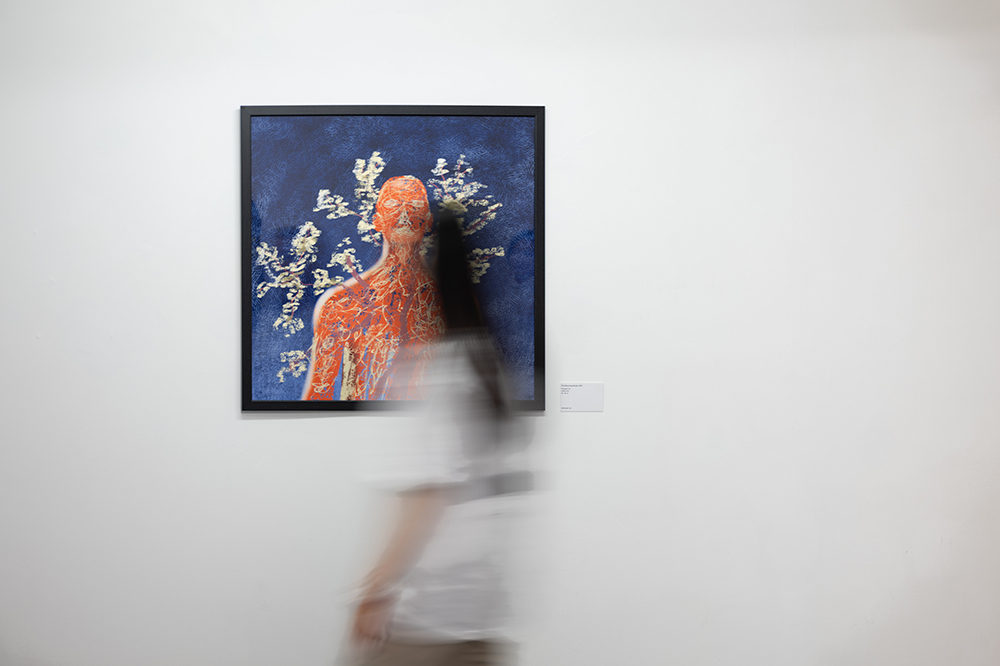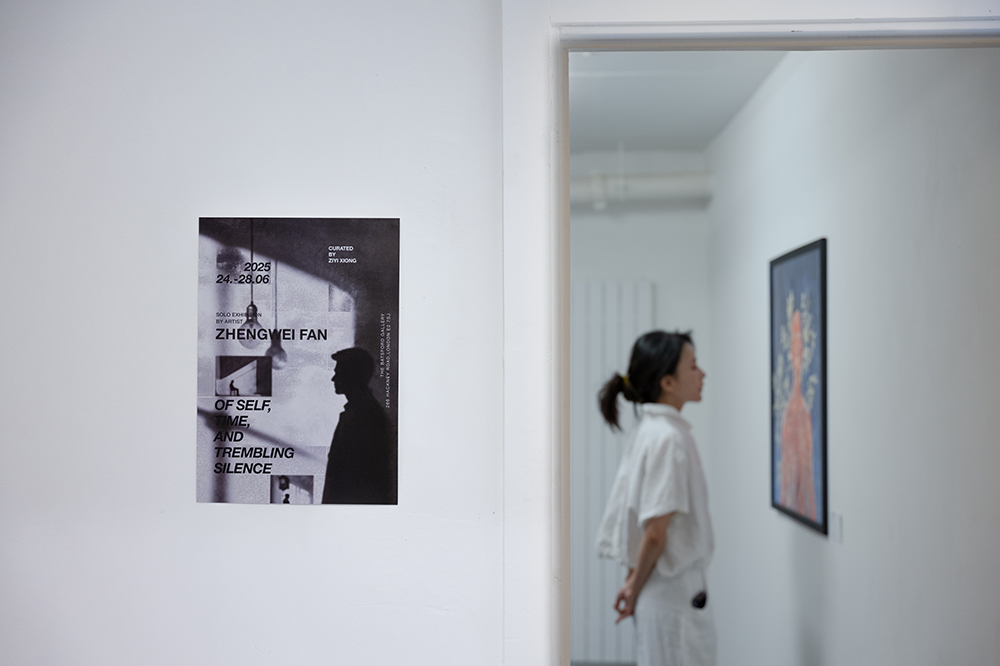In Of Self, Time, and Trembling Silence, curator Ziyi Xiong presents a controlled phenomenological environment that foregrounds latency, perceptual ambiguity, and spatial deceleration. Installed at Batsford Gallery and featuring the work of Zhengwei Fan, the exhibition invites the viewer into an extended encounter with the works’ shifting formal and emotional registers. Xiong’s curatorial logic draws on Henri Bergson’s concept of durée (time understood not as sequential but as qualitative and indivisible) and Roland Barthes’s notion of the “writerly” text (wherein meaning emerges through interpretation rather than instruction). The exhibition space is organised to impede quick comprehension and support durational, affectively charged looking.
Fan’s works oscillate between esoteric, chromatically saturated compositions and stark, grayscale studies of isolation, the medieval alchemical principle of coincidentia oppositorum in full force. The transition from the cosmic and symbolic to the intimate and humane produces a dialectical rhythm within the viewing experience: rather than presenting a unified stylistic mode, the curatorial framing permits and highlights dissonance. The interplay between colour and monochrome, abstraction and figuration, generates perceptual instability and reinforcing the show’s investigation of interiority and temporal fragmentation.

The exhibition is conceptually oriented around a notion of inwardness–specifically, the self as a fragmented and temporally unstable construct–that embraces Henri Bergson’s idea of durée, in which time is experienced as qualitative, fluid, and indivisible rather than measurable or sequential. In this sense, the curatorial design supports a non-linear temporality: it invites the viewer not to progress through the exhibition in a rational sequence, but to dwell within overlapping psychological and affective states. The audience begins with low-saturation works, reduced lighting, and unresolved compositional structures. Fan’s early grayscale images evoke psychic opacity and constrained gestures. As the exhibition progresses, chromatic intensity emerges, but the overall curatorial tempo remains measured. Xiong maintains a deliberate slowness that foregrounds perception as a mode of inquiry.
This restraint extends to the spatial juxtapositions Xiong establishes. One work depicts a luminous orange figure radiating against a dark background, its anatomical interior abstracted into visible vectors. In an adjacent piece, a solitary figure appears seated beneath a sharply angled shaft of light. In its balancing of dissonant visual registers–vibrant and austere, symbolic and observational–Xiong echoes the older philosophical logic of synthesis, where oppositional forces are not resolved but held in productive suspension. She does not annotate or mediate the tension between these modes of address: instead, the viewer is asked to reconcile affective and compositional discontinuity through their own interpretive labour. Curatorial authorship is enacted here not through intervention but through the structuring of proximity and duration.

Xiong deliberately avoids the normative tools of exposition (didactic wall texts, thematic signposting, or institutional framing devices), using the exhibition space as what Roland Barthes terms a “writerly” site: one in which meaning is produced through viewer engagement rather than curatorially imposed. The atmosphere remains consistent throughout: subdued, reflexive, temporally porous. Curatorial practice here becomes an apparatus for organising time, affect, and attention, producing a spatial model of sustained interior inquiry, whereas time, memory, and selfhood become privileges of presence, attunement, and the slow emergence of thought.

